I am intrigued by simple life forms that display phenomena we usually ascribe to organisms with a nervous system. I am a biophysicist by training and I use both experimental and theoretical tools in my research. During my PhD at the Max Planck Institute in Göttingen, Germany I studied the behaviour and the memory encoding properties of the unicellular living network Physarum polycephalum.
Captivated by the sophisticated behaviour of the unicellular eukaryote, I decided to delve deeper into the biomolecular details underlying the phenomena of information processing and storage. In my postdoc at the Institut Curie and Ecole normale superieure in Paris, I am studying how cells process information and communicate with each other. Read more about it below and drop me a line if you want to discuss.
Information flow in cells
With Mathieu Coppey, Aleksandra Walczak and Thierry Mora
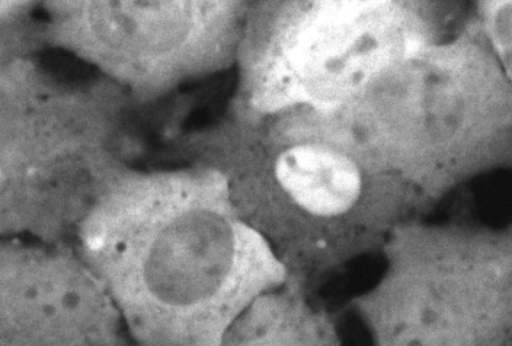
Signalling pathways are the cell’s windows into the environment. Streaming in from the level of the receptor all the way to the nucleus, the information is readily taken up and processed inside the cell.
I use a synergy of optogenetic experiments and a data analysis framework based on information theory to quantify the amount of information the cells receive from their environment, measuring the information flow along the signalling cascade.
Cell communication in cancer
With Mathieu Coppey, Aleksandra Walczak and Thierry Mora
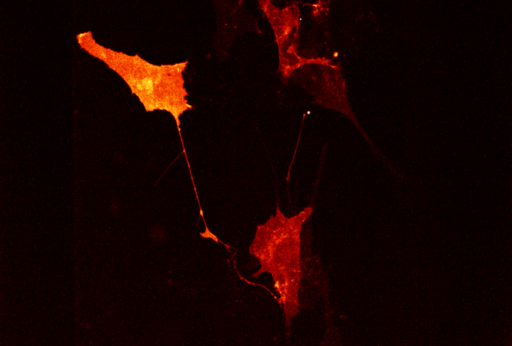
Surmounting the obstacle of drug resistance is a major challenge in cancer treatment. In this framework, I view cancer as a disease of communication and aim to restore the communication abilities of cancer cells, i.e. effectively reverse their carcinogenic potential.
Being able to measure the amount of information the cells are receiving, I search for the balance of drugs that produce the desired effect.
Bioelectric phenomena and signalling
With Mathieu Coppey
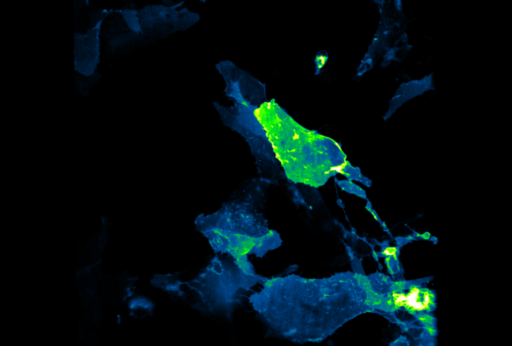
While the rapid exchange of electrical impulses is a well-known hallmark of communication between neurons, research on electrical phenomena in non-neuronal cells is only now gaining attention.
In this project, I am using optogenetics to study the interplay between the cell’s membrane potentials and the signalling in healthy and cancerous cells.
Previous work
Memory encoding in a living flow network
With Karen Alim
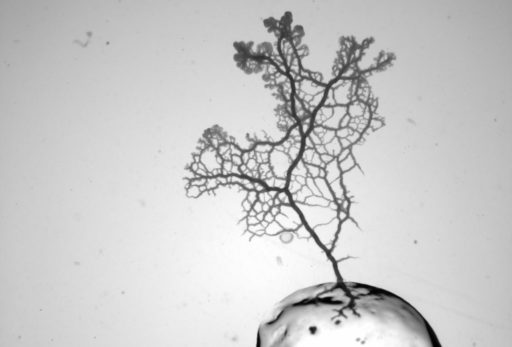
The ability of single organisms to conquer complex environments prompts questions about their perception of the environment. The giant single-celled eukaryote Physarum polycephalum exists as a network of contractile soft tubes. As the organism forages for food and flees from threat, the network constantly reorganises. The once consumed food source leaves a lasting imprint on the network morphology.
In this project, I explored the mechanism driving the creation of the imprint and tested whether the imprint constitutes a memory that the organism can read out and use to guide future decisions.
Read more here: https://doi.org/10.1073/pnas.2007815118
Emergence of behavior from coordinated contractions
With Philipp Fleig, Michael Wilczek and Karen Alim
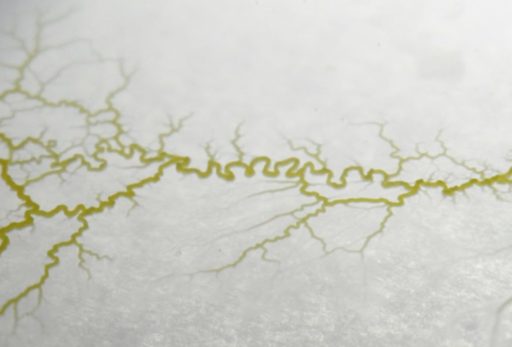
Just like memory, behaviour is another concept traditionally associated with higher organisms. However, the giant single-celled slime mould Physarum polycephalum exhibits complex behaviours.
In this work, we identified the plethora of contractile modes that help the organism successfully steer through its environment, resulting in a range of discernible behaviours.
Read more here: https://elifesciences.org/articles/62863